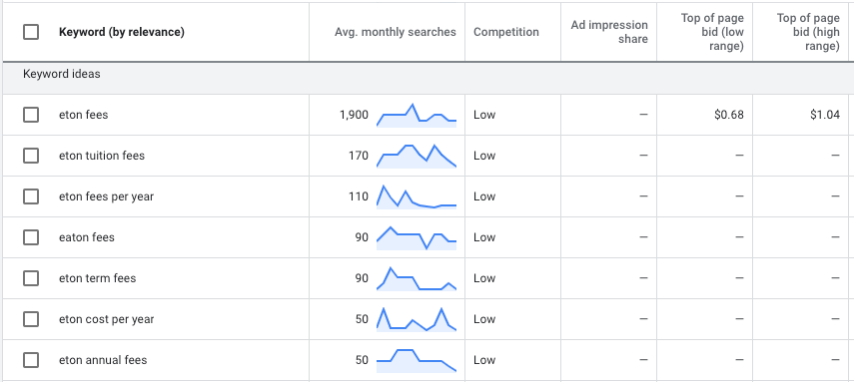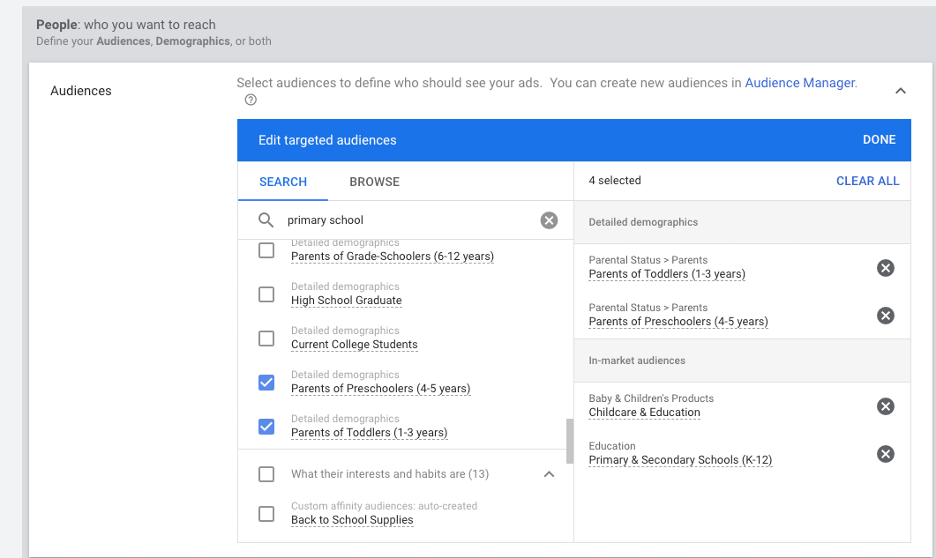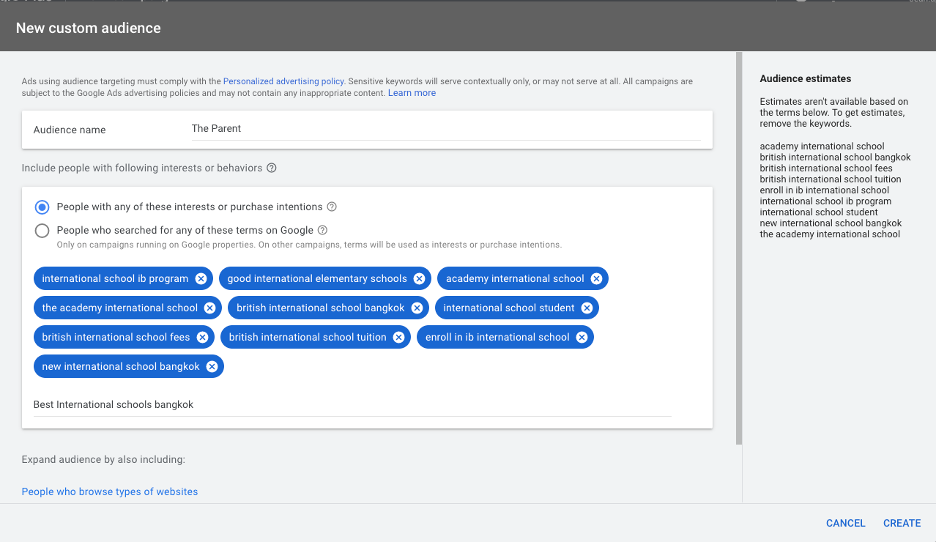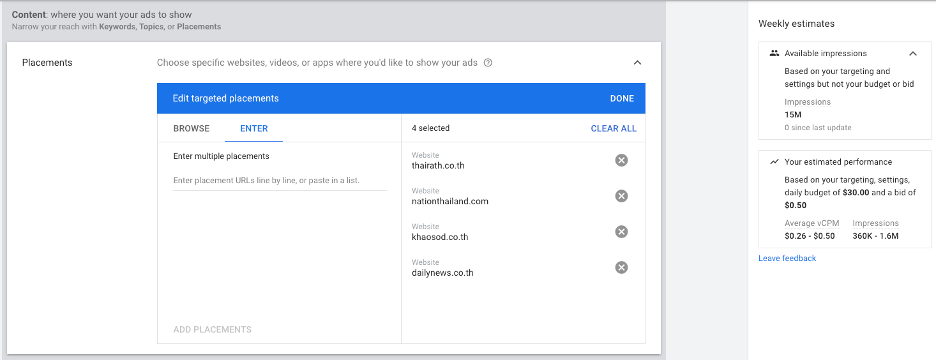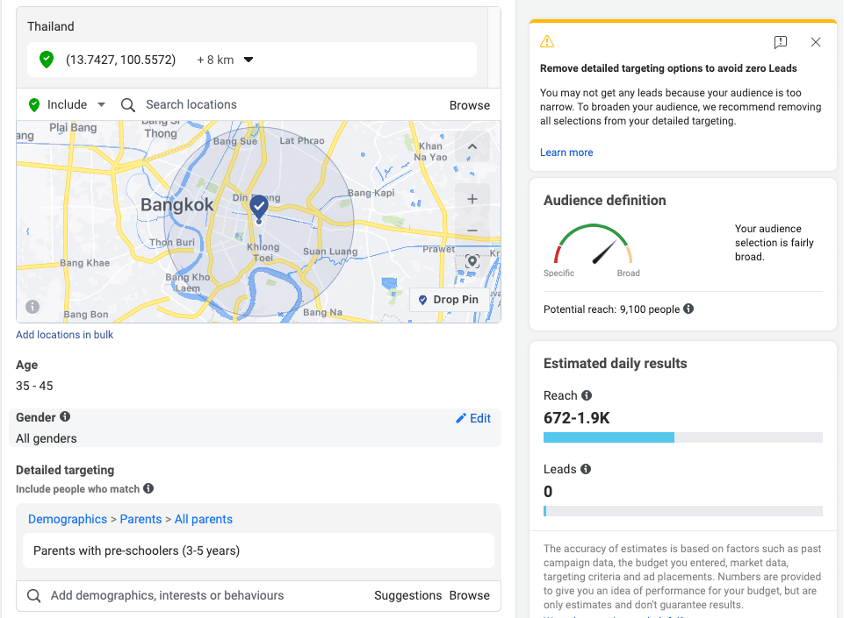Targeting Hacks for International Schools in Thailand
Creating an effective digital marketing strategy for international schools is among the most challenging markets there is. The competition is intense, it’s a dynamic landscape with new schools popping up annually, parents now have more choice than ever before, and you have more competition.
Your advertising targeting, creative and landing page need to be better and more in sync than ever before, as does your content and all other digital marketing collateral and touchpoints. Largely, we will be focusing on targeting in this article but will discuss creative and website development/design in another.
International School marketing is competitive largely because it’s so lucrative. Schools will largely have a whole host of fixed costs and a capacity percentage – increasing that capacity towards 100% is where the profit really is. Also, enrolling a child in a school equals significant monthly revenue which is multi-year (and sometimes generational). The right eyeballs and leads are exceptionally high value.
No matter if you are an established name needing to reboot your positioning, or a new build school looking to make some waves in and get some market share the below strategies to help you position your marketing.
We will be looking at strategies that will enable you to:
1. Steal from the Competition
2. Target other schools, nurseries, and Muu Baans
3. Get In-market, High Intent Searchers
4. Build a Custom Audience
5. Get in top-end publications for pennies
6. Implement a simple, low maintenance targeting strategy
Steal from the Competition
Capitalize on your competitor’s brand name: Choosing a school is one of the most critical decisions a parent will make and it’s one that they deliberate about for a prolonged period.
They will probably spend months (or years) deciding about where to send their child.
By leveraging the power of your competitors early in the decision-making process, you can then target purchase-ready parents for the duration of their consideration process – very cost-effectively using remarketing. This is important when you consider how long the decision funnel is for parents when selecting a school, you need to be constantly reinforcing your brand throughout their decision-making process.
The simplest is to buy the terms when people search on Google. This is called Cost-per-Click, or Search advertising. This enables you to advertise once people have searched for certain terms. If someone searches for “Best School in Thailand” – you can advertise on that search (see below). You can also use this technique to divert traffic from your competition.
I focused on Eton-based search terms below (a very prestigious school in the UK) – anybody can advertise on these search phrases though as long as they are not trademarked. These types of searches are doubly powerful as you are not only leveraging Eton’s brand and showing up in advertising, but you are looking for people who are also interested in the costs and pricing – which means they could be deeper in the buyer funnel and actually a better lead.
In order to not waste clicks and spend and capture that viewer permanently, we would place a cookie on the website. This will allow us to continually advertise to the person while they browse the web, using something called remarketing, which is a very powerful and cost-effective strategy when you consider the long consideration phase parents go through for their child in sending to schools, you probably want to be advertising to the same person for 3 – 6 months continuously.
This is a powerful strategy, imagine being able to geographically target high-end nurseries / Muu Baans and the parents who could potentially send children to your school. For this strategy, we will be using Facebook’s advertising platform.
Universally this strategy is called Geofencing, where you target out an area, typically a small one, and target people who come into it. This is a particularly powerful strategy for restauranters or brick and mortar stores who want to target their competitors’ customers.
There are many different types of platforms, but Google doesn’t allow for geofencing until a significant spend threshold is reached (Aware are above the threshold), so it’s possibly not accessible for many people. Facebook does enable geofencing, but it is only within a 1KM radius, which is usually too large an area. By using exclusion zones (the red circles), you can shrink the radius down to being very, very small.
For this, we are going to find out the exact locations of the nurseries, schools, or Muu Baans we want to target. For this example, I would like us to isolate a small part of Bangkok, where there are a lot of schools – I have chosen Sukhumvit Road: In this area there are about 10 or so nurseries – and we want to target them.
Using Google Maps, I copy and paste the address of all the locations I want to target, Facebook only allows for a minimum radius of about 1KM – we would like to a good bit smaller than that – so we have to create exclusion zones, see below: You will need to have a lot of locations to get scale in this strategy, but it is hyper-targeted.
Get In-Market, High Intent Searchers:
This is done using the Google Display Network, Google identifies people who are browsing for schools / showing interest in nursery, primary or secondary school education.
Display advertising is the image-based advertising that you frequently see on blogs and other websites. Unlike search-based advertising where you are triggering for keywords, in Display advertising, you are targeting audiences with images and paying for views.
You will need to layer some additional targeting on top of this because virtually every parent with young children will be browsing for schools – not just parents who are looking at international schools.
In the below example we are targeting people google has identified as being “In-Market” for Primary and Secondary Schools and parents of toddlers and preschoolers.
This is probably a bit broad, so we would want to layer on more specific demographics to target high-income, highly educated people who are in a position to send a child to your school.
Build a Custom Audience
The first thing we need to decide is who we are targeting. I am going to build a buyer persona on who I think is a likely target demographic for international schools in Bangkok.
Remember we want to be as precise as possible, so we need to make some general assumptions to get our target market down into something manageable and relevant.
I would probably start with the following personal traits:
1. Must be a parent (obviously)
2. Live in Bangkok (highly likely)
3. Female (an assumption that women do the research initially into schools and then parents decide together
4. Well-educated (I would say at least a masters’ degree, cost prohibition on international schools would mean that people need good jobs and good educational background.)
5. 35 – 45 years old (Follows on from point 4 – professionals with school-age children).
We can then build a custom audience inside Google Ads, that not only applies the core personal trait demographics above but also certain interest or search-based targeting.
In the below example, our custom audience we have also decided to match to people who are also searching for certain international school-based terms. You can enter as many or as few of these terms as you would like.
Get in Top Tier Publications for Pennies:
As a high-end school, targeting a high-end consumer base, your school and the brand need to be seen in the most prestigious publications. Dealing with publications directly can be expensive and time-consuming, so Google Display has a more accessible and convenient option.
By using the Google Display network, you can one place yourself on these platforms for pennies. In the below example we are on Thai Rath, The Nation, Khao Sod, and Daily news with a potential 1.6 million impressions for just 15 baht per 1,000 views.
6. The Simple Targeting Strategies
We really like leveraging geographies, especially targeting high-end neighborhoods when you can also layer demographics like must be a parent or must have young children on top. The results of just these two or three different elements probably make highly targeted advertising.
The easiest way to set up without any of the complexity above is using Facebook advertising.
1. Pick a high-end part of town we have selected from the Sukhumvit – Silom – Lad Prao – Chao Praya River. We choose people who must live in these areas.
2. We set our age demographic as being 35 – 35 years old.
3. Importantly we select people who have children who are of pre-school age.
4. If the targeting is still too broad, layer on an extra education-based demographic.
Aware can get help supercharge your business, increase revenue, and reach new customers.
Let Aware manage the digital marketing for your business today!
Digital Marketing Manager at Aware Group: Working his way through the world of technology and Thailand as best as he can. Happy to contribute to other tech publications.

